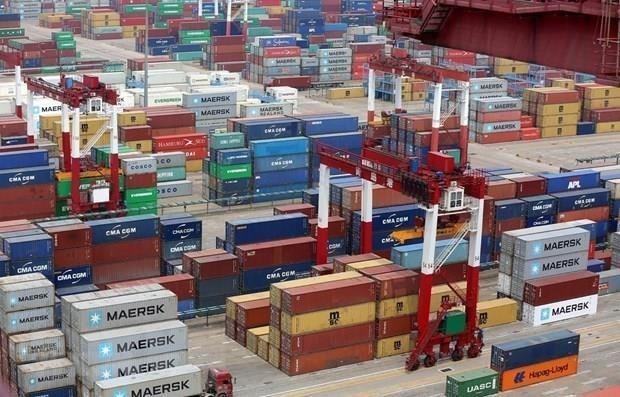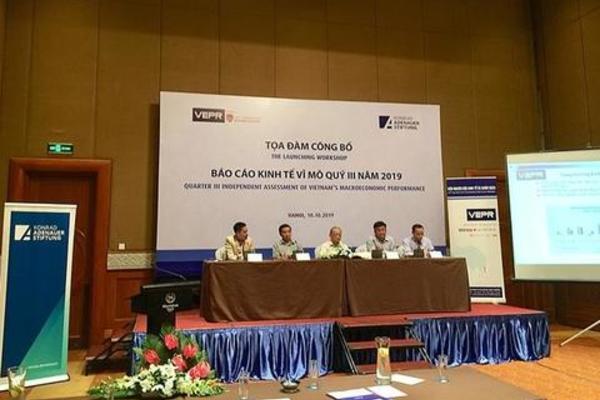 |
In the report, themed “Weathering GrowingRisks”, Vietnam’s GDP expansion is projected to decelerate from 7.1 percent in2018 to 6.6 percent in 2019, reflecting slower export growth and weakeragricultural production growth.
Growth is expected to further moderate in 2020and 2021 to a more sustainable pace of 6.5 percent, in line with potentialoutput.
Over the forecast horizon, inflation ispredicted to stay below the government’s 4 percent target, and the currentaccount is estimated to sustain a smaller surplus, according to the WB.
The report added Vietnam remains susceptible tochanging global economic conditions, given its high trade openness andrelatively limited fiscal and monetary policy buffers. An escalation of tradetensions and a sharper than expected global downturn could weigh on Vietnam’sgrowth.
Bolder implementation of structural, fiscal andbanking sector reforms would help to mitigate downside risks and supportsustained high growth, the WB said in its economic update.
According to WB experts, strong growth indomestic consumption and improving competitiveness are the two main drivers ofVietnam’s economic growth at present.
Regarding the foreign direct investment (FDI)flow into Vietnam over the last nine months, WB lead economist for VietnamJacques Morisset said the country remained an attractive destination forforeign investors and attracted more FDI than other countries in the region.
However, the connectivity between FDI andprivate firms in Vietnam is still weak. Therefore, the Government should takeappropriate measures to solve this problem, he added.
In its report, the WB forecast growth indeveloping East Asia and Pacific economies will decline from 6.3 percent in2018 to 5.8 percent in 2019, 5.7 percent in 2020 and 5.6 percent in 2021.
VEPR forecasts VN’s 2019 growth at 7.05 per cent
 |
| Participants at the launching workshop themed “Quarter III Independent assessment of Viet Nam’s macroeconomic performance”, held by the Viet Nam Institute for Economic and Policy Research (VEPR) in Ha Noi on Thursday. |
Viet Nam's economic growth is forecast to reach 7.26 per cent in the fourth quarter and 7.05 per cent for the whole year of 2019.
The information was released at a workshop themed ‘Quarter III Independent assessment of Viet Nam’s macro-economic performance’, held by the Viet Nam Institute for Economic and Policy Research (VEPR) in Ha Noi on Thursday.
In the third quarter of this year, Viet Nam’s economy grew at 7.31 per cent. The figure was 6.98 per cent in the first nine months, said Pham The Anh, VEPR's chief economist.
In the first nine months of 2019, the service sector grew by 6.85 per cent, agriculture, forestry and fishery increased by 2.02 per cent, while industry and construction climbed by 9.56 per cent. The Industrial Production Index (IPI) rose by 9.6 per cent, the consumption index of the manufacturing and processing sector increased by 9.5 per cent, he said.
Regarding enterprises, in Q3, there were 35,316 newly registered enterprises with total registered capital of VND430.6 trillion (US$18.4 billion), up 37 per cent year-on-year. The number of enterprises suspending operations continued to decrease to 12,505.
CPI in Q3 increased by 2.23 per cent year-on-year, the figure for nine months was 2.5 per cent, but there is a high risk of rising inflation with increases in food prices due to epidemics, as well as increasing education fees and energy prices, Thanh said.
The VND/USD exchange rate at commercial banks fluctuated while the central exchange rate increased slightly. The exchange rate at commercial banks fluctuated around VND23,275 per USD.
Total State budget revenue in the first six months was estimated at VND1.1 trillion, equalling 77.5 per cent of the yearly estimate and up 10.1 per cent over the same period in 2018.
In six months, total budget expenditure was estimated at VND1 trillion, equalling 63.1 per cent of the yearly estimate, up 3.8 per cent year-on-year.
According to The Anh, Viet Nam’s GDP growth in the third quarter stood in contrast to the global trend.
During Q3, the growth rates slowed down in many economies.
The US economy decelerated so the US Federal Reserve (Fed) cut its interest rate twice in Q3. European economies enervated, thus the ECB also had to reduce interest rates. Meanwhile, Japanese government has been attracting foreign workers to compensate their labour shortages.
There are increasing concerns about China’s economy due to its slower economic growth and the reducing power of the yuan. Besides, China’s PMI was under 50 while growth-enhancing packages were no longer effective.
In addition, oil prices fluctuated unpredictably owing to trade tension between US-China, Japan-Korea and a recent attack on the world’s largest oil refinery in Saudi Arabia.
The economic growth in ASEAN countries decelerated. Thailand offers preferential packages to attract companies that want to move production out of China.
Most central banks of these countries cut interest rates to spur growth, The Anh said. VNA/VNS
 The medium-term outlook for the Vietnamese economy is broadly positive despite persistent downside risks, the World Bank (WB) said in its East Asia and Pacific Economic Update released on October 10.
The medium-term outlook for the Vietnamese economy is broadly positive despite persistent downside risks, the World Bank (WB) said in its East Asia and Pacific Economic Update released on October 10.